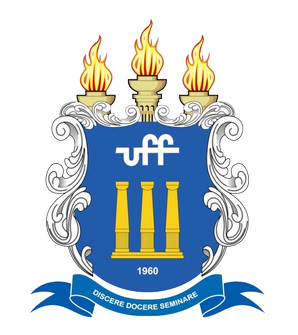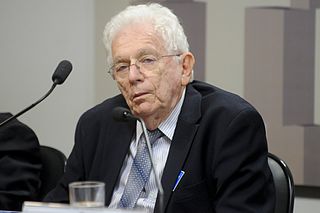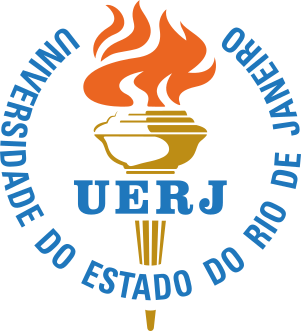Universidade Candido Mendes is a private university located in Rio de Janeiro, Brazil. [1] It is Latin America's oldest private university.
Universidade Candido Mendes is a private university located in Rio de Janeiro, Brazil. [1] It is Latin America's oldest private university.

It was founded in 1902, [2] thus being the oldest private university in Latin America, [3] by the Count Cândido Mendes de Almeida. [2] The university was renamed to Escola Técnica de Comércio Cândido Mendes in the 1950s. [2] The law school was created by Cândido Mendes de Almeida Júnior during that decade. [2] The university's research institute, named IUPERJ, or Instituto Universitário de Pesquisas do Rio de Janeiro, was inaugurated in the 1960s. [2] The campi located in Ipanema, Campos dos Goytacazes and Nova Friburgo were inaugurated in the 1970s. [2]

Rio de Janeiro, or simply Rio, is the capital of the state of the same name, and the second most populous city in Brazil, after São Paulo. Listed by the GaWC as a beta global city, Rio de Janeiro is the sixth most populous city in the Americas. Part of the city has been designated as a World Heritage Site, named "Rio de Janeiro: Carioca Landscapes between the Mountain and the Sea", on 1 July 2012 as a Cultural Landscape.

Rio de Janeiro is one of the 27 federative units of Brazil. It has the second largest economy of Brazil, with the largest being that of the state of São Paulo. The state, which has 8.2% of the Brazilian population, is responsible for 9.2% of the Brazilian GDP.

The Fluminense Federal University is a public higher education institution located mainly in Niterói and in other cities of Rio de Janeiro state. It was first established on December 18, 1960, with the name of Universidade Federal do Estado do Rio de Janeiro (UFERJ), through an integration of different academic colleges in the city of Niterói. On November 5, 1965, the current name became official.

Science and technology in Brazil has entered the international arena in recent decades. The central agency for science and technology in Brazil is the Ministry of Science and Technology, which includes the CNPq and Finep. This ministry also has a direct supervision over the National Institute for Space Research, the National Institute of Amazonian Research, and the National Institute of Technology (Brazil). The ministry is also responsible for the Secretariat for Computer and Automation Policy, which is the successor of the SEI. The Ministry of Science and Technology, which the Sarney government created in March 1985, was headed initially by a person associated with the nationalist ideologies of the past. Although the new minister was able to raise the budget for the science and technology sector, he remained isolated within the government and had no influence on policy making for the economy.


Luciano Pedro Mendes de Almeida was a Brazilian Jesuit who served as the Archbishop of Mariana from 1988 until his death. He was a noted pastor passionate about the defence of human rights and for the participation of the faithful in ecclesial affairs; he oversaw the establishment of retirement homes and facilities for disabled people during his tenure as archbishop.

Simon Schwartzman is a Brazilian social scientist. He has published extensively, with many books, book chapters and academic articles in the areas of comparative politics, sociology of science, social policy, and education, with emphasis on Brazil and Latin America. He was the President of the Brazilian Institute for Geography and Statistics (IBGE) and is a retired professor from the Federal University of Minas Gerais. He is member of the Brazilian Academy of Sciences, holder of the Grand Cross of the Brazilian Order of Scientific Merit (1996). He is currently associate researcher at the Institute for Studies in Economic Policy Instituto de Estudos de Política Econômica / Casa das Garças - Rio de Janeiro.
Ibmec is a private research university with five campuses in Brazil's main cities of Rio de Janeiro, São Paulo, Belo Horizonte, and Brasília. Founded in 1970, it is one of Latin America's most prestigious business and economics school and today offers undergraduate and graduate programs in several other disciplines.

Rio de Janeiro State University is a public research university in the state of Rio de Janeiro, Brazil. It is one of the largest and most prestigious universities in the country. The university's law and medical schools are among the best in the nation. Its Biology, Social Science, Nursing and Philosophy courses are also highly praised, as stated by Guia do Estudante.

The creation of art in the geographic area now known as Brazil begins with the earliest records of its human habitation. The original inhabitants of the land, pre-Columbian Indigenous or Natives peoples, produced various forms of art; specific cultures like the Marajoara left sophisticated painted pottery. This area was colonized by Portugal in the 16th century and given the modern name of Brazil. Brazilian art is most commonly used as an umbrella term for art created in this region post Portuguese colonization.

The Federal Rural University of Rio de Janeiro is a public university located in Seropédica in the State of Rio de Janeiro, Brazil. It possesses the largest campus among Latin American universities and is known for being the first university to offer agriculture related courses in Brazil.

The Museum of Contemporary Art, University of São Paulo is a contemporary art museum located in the main campus of the University of São Paulo, in São Paulo, Brazil, and in Ibirapuera Park, in the same city. It is one of the largest art museums in the country.

The Federal University of Rio de Janeiro Faculty of Law, also known as the National Faculty of Law, is a law school located in downtown Rio de Janeiro, Brazil.
The following is a timeline of the history of the city of Rio de Janeiro, Brazil.
Cândido Mendes may refer to:

Palácio dos Bandeirantes is a palace in São Paulo, Brazil. It is the seat of the São Paulo state government and the governor's official residence. The palace, located at the Morumbi district, also houses some secretaries and a wide historical and artistic exhibition open to the public.
Universidade Veiga de Almeida is a private university with campuses located in Rio de Janeiro and Cabo Frio, Brazil.
Helio Jaguaribe de Mattos (1923-2018) was a Brazilian political scientist. He was born in Rio de Janeiro, the son of eminent geographer Francisco Jaguaribe de Mattos, and Francelina Santos Jaguaribe de Mattos. He studied law at the Pontifical Catholic University, graduating in 1946. As an academic, he specialized in the sociopolitical development of Brazil and Latin America. He taught at Harvard, Stanford, MIT, and El Colegio de Méjico. He also held a chair at the University Institute in Rio de Janeiro. He was a member of the Club of Rome. In 2005, he was elected to be the ninth occupant of Chair No. 11 at the Brazilian Academy of Letters in succession to Celso Furtado. He was received into the Academy on July 22, 2005 by academician Candido Mendes de Almeida.